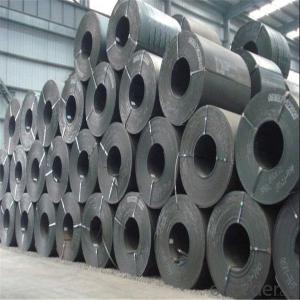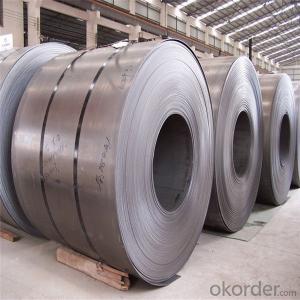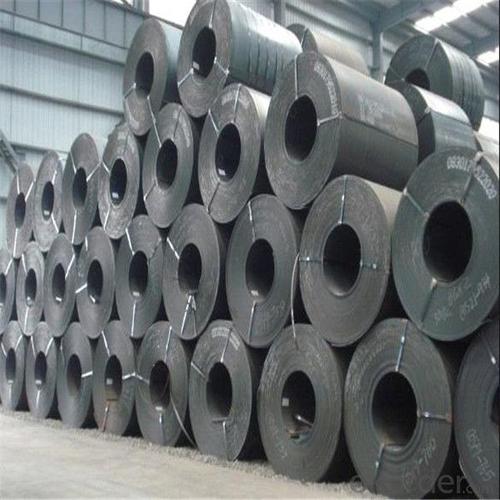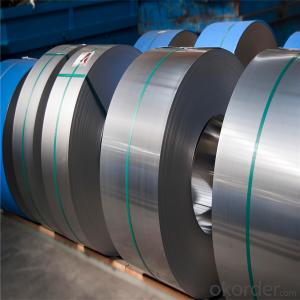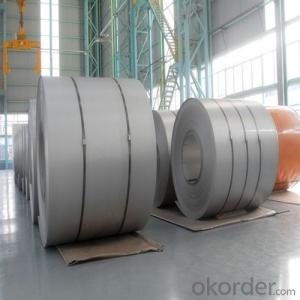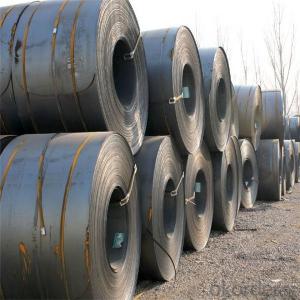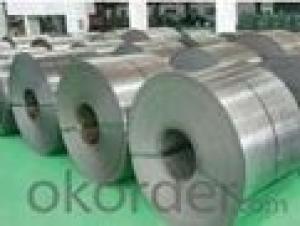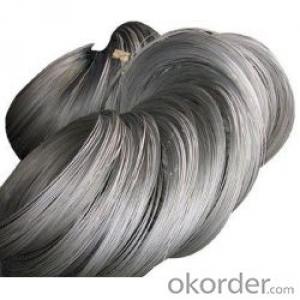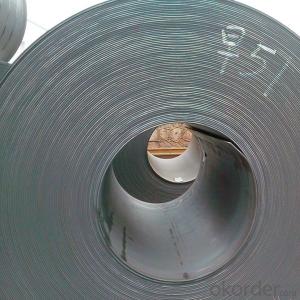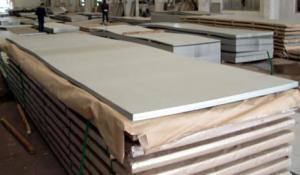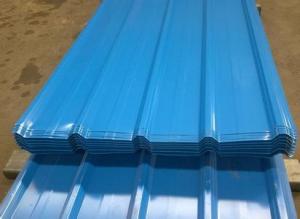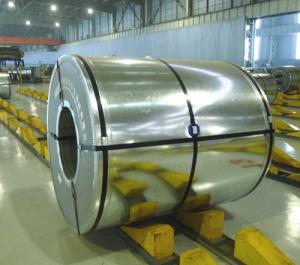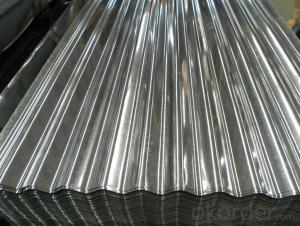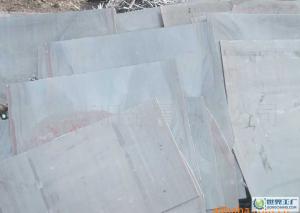Steel sheet coil hot rolled thickness 1.5mm-25mm
- Loading Port:
- Tianjin
- Payment Terms:
- TT OR LC
- Min Order Qty:
- 100 m.t.
- Supply Capability:
- 16482 m.t./month
OKorder Service Pledge
OKorder Financial Service
You Might Also Like
Specification
Hot rolling is a mill process which involves rolling the steel at a high temperature (typically at a temperature over 1700° F), which is above the steel’s recrystallization temperature. When steel is above the recrystallization temperature, it can be shaped and formed easily, and the steel can be made in much larger sizes. Hot rolled steel is typically cheaper than cold rolled steel due to the fact that it is often manufactured without any delays in the process, and therefore the reheating of the steel is not required (as it is with cold rolled). When the steel cools off it will shrink slightly thus giving less control on the size and shape of the finished product when compared to cold rolled.
Uses: Hot rolled products like hot rolled steel bars are used in the welding and construction trades to make railroad tracks and I-beams, for example. Hot rolled steel is used in situations where precise shapes and tolerances are not required.
Standard and Grade :
Hot rolled steel coils | ||||
JIS | ASTM | SAE | EN | |
Commercial quality | G3131 SPHC | A569 A635 A659 A1011 CS Type A,B,C | 1006~1025 |
10111 DD11 |
Drawing quality | G3131 SPHD | 1006~1010 | 10111 DD12 | |
Deep drawing quality | G3131 SPHE | A622 A1011 DS Type A,B | 1006~1010 | 10111 DD13 DD14 |
General structure (T.S.<490N/MM2) | G3101 SS330 SS440 G3106 SM400A G3132 SPHT1 SPTT2 SPHT3 | A36 A283 GR.C A570 GR.30~40 A1001 SS GR.30~40 |
1010~1025 | |
General structure (T.S.≥490N/MM2) | G3101 SS490 G3106 SM490A SM490YA | A570 GR.45~50 A607 GR.45~70 A1011 SS GR.45,50 |
J1392 050X | |
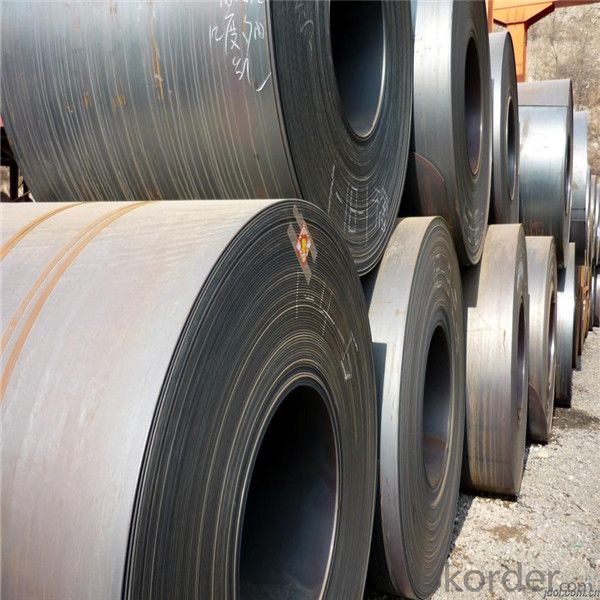
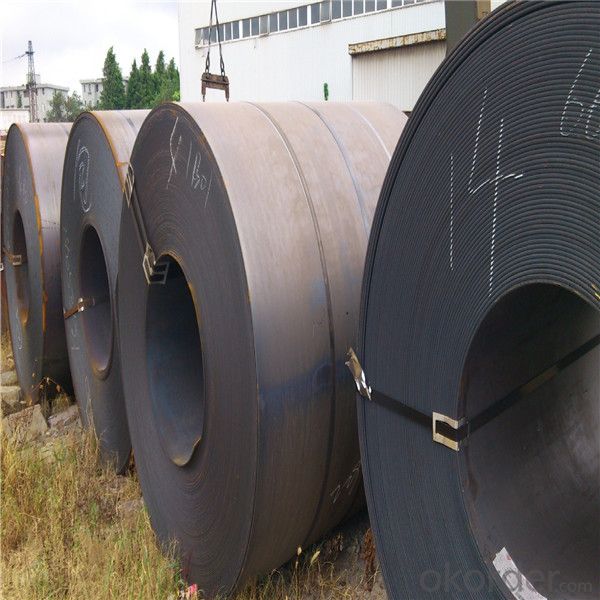
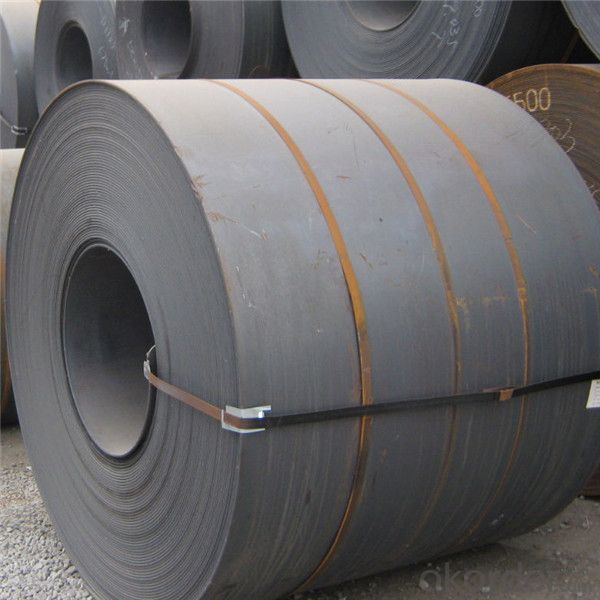
Packing:
Packaging Detail | The packing of coil consists of anti-damp paper ,PVC film ,hardboard paper , steel box , strapped with steel strips, fitted with locks and edge protectors and guarantees the optimal condition of the delivered goods. Each coil can be additionally fitted with wooden/steel skids(eye of the side) or wooden pallets(eye of the sky) |
Delivery Time | within 30 days of receipt of LC original or prepayment |
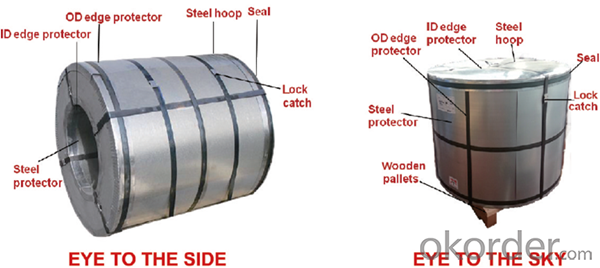
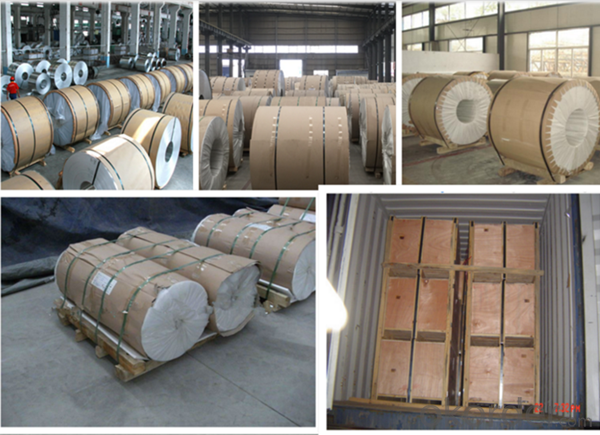
Our Services
MOQ | FCL, 25 metric tons per 20GP, can be assorted with different sizes. |
LCL for trial order is acceptable. | |
Price Term | EX-WORK, FOB China Port, CNF, CIF |
Payment | T/T, 30% advanced payment before production and balance before shipment; OR Irrevocable L/C at sight. |
Delivery Time | within 30 days of receipt of LC original or prepayment |
(1) We cooperate with famousfactories with advanced equipment and well trained workers.
(2) We can provide factory price with trading company service.
(3) We continuously work on the improvement of our processes, guaranteeing
consistently high standards of quality to keep none compensation.
(4) We guarantee 24 hours response and 48 hours solution providing service.
(5) We accept small order quantity before formal cooperation.
(6) We deliver the agreed quality at the agreed time, reacting to changes in
customer wishes in a flexible way.
(7) Due to our volume and selling power, we have excellent freight rates with
shipping lines.
(8) We strive to always be fair and honest in our dealings with customers.
(9) We strive to work together with customers to achieve much more than we
can achieve alone.
(10) Through our passion and commitment we aim to be a market leader in all
our key markets. To maintain our position as market leader we must continue to
add value in all that we do.
FAQ:
1. How to guarantee the quality of the products?
We have established the international advanced quality management system,every link from raw
material to final product we have strict quality test;We resolutely put an end to unqualified products
flowing into the market. At the same time, we will provide necessary follow-up service assurance.
2. How long can we receive the product after purchase?
Usually within thirty working days after receiving buyer’s advance payment or LC. We will arrange the factory manufacturing as soon as possible. The cargo readiness usually takes 15-25 days, but the shipment will depend on the vessel situation.
- Q: How do steel sheets handle thermal insulation?
- Steel sheets are not typically used for thermal insulation purposes, as steel is a good conductor of heat. This means that it easily transfers heat from one side to the other, making it unsuitable for insulating against thermal energy transfer. In fact, steel sheets can even act as a thermal bridge, allowing heat to flow through them and bypass any insulation that may be present. To achieve effective thermal insulation, materials with low thermal conductivity, such as insulation foams or fiberglass, are commonly used instead. These materials are designed to minimize the transfer of heat and provide better insulation performance.
- Q: What are the different surface protection methods for steel sheets?
- There are several surface protection methods for steel sheets, including galvanizing, powder coating, painting, and epoxy coating. Galvanizing involves applying a layer of zinc to the steel surface to prevent corrosion. Powder coating is a process where a dry powder is applied electrostatically and then cured under heat, creating a durable and protective coating. Painting involves applying a liquid paint to the steel surface, providing a barrier against corrosion. Epoxy coating is a type of paint that is specially formulated with epoxy resins, offering excellent adhesion and chemical resistance.
- Q: How do steel sheets compare to other materials like aluminum or copper?
- Steel sheets have several advantages over other materials like aluminum or copper. Firstly, steel is much stronger and more durable than both aluminum and copper. This makes steel sheets ideal for applications that require high strength and resistance to wear and tear, such as construction, automotive manufacturing, and industrial machinery. Secondly, steel sheets have a higher melting point than both aluminum and copper. This means that steel can withstand higher temperatures without deforming or melting, making it suitable for applications that involve exposure to high heat or fire. Additionally, steel sheets are more cost-effective than both aluminum and copper. Steel is widely available and relatively inexpensive compared to these other materials. This makes steel sheets a more economical choice for large-scale applications that require a significant amount of material. Furthermore, steel sheets have excellent corrosion resistance properties when properly coated or treated. Aluminum and copper, on the other hand, are more prone to corrosion and require additional protective measures. This makes steel sheets a better choice for outdoor or marine applications where exposure to moisture and harsh environments is a concern. Lastly, steel sheets are highly recyclable, making them a more sustainable choice compared to aluminum and copper. Steel is one of the most recycled materials in the world, with a recycling rate of nearly 90%. This reduces the environmental impact and conserves natural resources. In summary, steel sheets offer superior strength, durability, heat resistance, cost-effectiveness, corrosion resistance, and recyclability compared to materials like aluminum or copper. These qualities make steel sheets a versatile and reliable choice for a wide range of applications across various industries.
- Q: Can steel sheets be used in high-temperature applications?
- High-temperature applications can make use of steel sheets, as steel possesses exceptional heat resistance and can endure high temperatures while retaining its structural integrity. The suitability of steel for such applications is heavily influenced by its specific type and composition. Stainless steel or heat-resistant steel, for instance, are specifically engineered to withstand exceedingly high temperatures and are widely utilized in industries like aerospace, automotive, and manufacturing. These steel sheets are applicable in various high-temperature settings including furnaces, boilers, exhaust systems, and heat exchangers, among others. Nevertheless, it is crucial to consider factors such as the precise temperature range, duration of exposure, and the presence of any potentially corrosive elements in the high-temperature environment to ensure the selected steel sheet is suitable for the intended purpose.
- Q: How are steel sheets protected during storage and handling?
- To safeguard steel sheets and guarantee their quality, a range of methods are employed during storage and handling. A frequently utilized technique involves applying a protective coating or oil to shield the sheets from moisture and other environmental factors that may lead to corrosion or rust. To shield steel sheets from direct sunlight, rain, and adverse weather conditions, they are frequently stored in covered warehouses or designated storage areas. This precautionary measure prevents any potential harm to the sheets and preserves their structural integrity. For transportation and handling, cranes or forklifts equipped with suitable lifting apparatus are commonly used to lift the steel sheets, minimizing the risk of bending or twisting. Moreover, the sheets are meticulously secured and stacked in a manner that reduces the likelihood of damage or deformation. Furthermore, steel sheets are often packaged with materials like plastic or cardboard to provide additional protection against scratches and physical harm. They may also be wrapped or sealed to prevent contact with moisture or contaminants. Overall, the objective is to maintain the quality of steel sheets and prevent any potential damage that could compromise their performance in future applications by ensuring they are stored and handled in a secure and controlled environment.
- Q: What are the different standards and certifications for steel sheets?
- There are several different standards and certifications for steel sheets, including the American Society for Testing and Materials (ASTM) standards, the International Organization for Standardization (ISO) certifications, and the European Committee for Standardization (EN) standards. These standards and certifications ensure that steel sheets meet specific requirements for quality, strength, durability, and safety. They help to standardize the production and use of steel sheets across different industries and regions, providing assurance to consumers and businesses alike.
- Q: Can the steel sheets be used as a magnetic surface?
- Yes, steel sheets can be used as a magnetic surface.
- Q: What is galvanized steel sheet?
- Galvanized steel sheet refers to a type of steel that has been coated with a protective layer of zinc to prevent corrosion. The process of galvanization involves immersing the steel sheet in a bath of molten zinc, which forms a metallurgical bond with the surface of the steel. This creates a durable and long-lasting material that is resistant to rust and other forms of corrosion. The zinc coating acts as a sacrificial barrier, meaning that it will corrode before the steel underneath does. This makes galvanized steel sheet an excellent choice for outdoor applications or environments with high humidity or exposure to moisture. It is commonly used in construction, automotive manufacturing, and the production of household appliances. Galvanized steel sheets have a characteristic silver-gray appearance due to the zinc coating. They offer excellent strength and durability, making them suitable for various structural applications. Additionally, galvanized steel sheets are relatively low maintenance and require minimal upkeep to maintain their corrosion resistance. In summary, galvanized steel sheet is a type of steel that has been coated with a layer of zinc to protect it from corrosion. This coating provides excellent durability and resistance to rust, making it a popular choice in various industries.
- Q: What is the cost of steel sheets compared to other materials?
- The price of steel sheets can vary depending on factors such as the type of material, size, thickness, and market conditions. Typically, steel sheets are pricier than materials like aluminum or plastic, but they are renowned for their durability and strength. Industries like construction, automotive, and manufacturing commonly utilize steel sheets due to their ability to bear heavy loads and resist corrosion. Although steel sheets may have a higher initial cost, they often have a longer lifespan and require less maintenance compared to other materials. Furthermore, the cost of steel sheets can change based on global supply and demand dynamics, as well as any tariffs or trade restrictions that affect the steel market.
- Q: What are the common thicknesses for roofing steel sheets?
- Roofing steel sheets come in a variety of thicknesses, typically ranging from 0.4mm to 0.8mm. Nevertheless, the actual thickness required will be influenced by factors like the roofing system type, regional climate, and desired durability level. In regions prone to harsh weather, thicker steel sheets, like those around 0.8mm, are commonly employed, whereas thinner sheets may suffice for less challenging environments. Consulting with a roofing expert or manufacturer is crucial to ascertain the ideal thickness for a particular roofing undertaking.
Send your message to us
Steel sheet coil hot rolled thickness 1.5mm-25mm
- Loading Port:
- Tianjin
- Payment Terms:
- TT OR LC
- Min Order Qty:
- 100 m.t.
- Supply Capability:
- 16482 m.t./month
OKorder Service Pledge
OKorder Financial Service
Similar products
Hot products
Hot Searches
Related keywords
